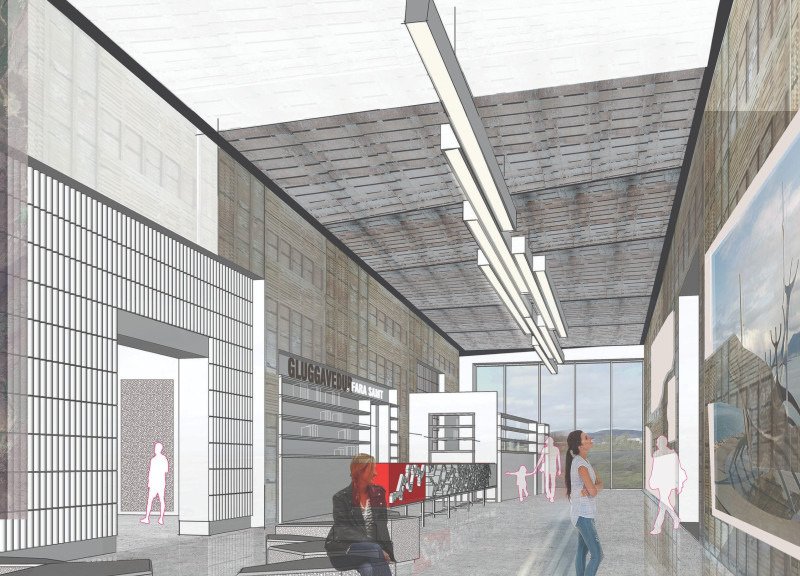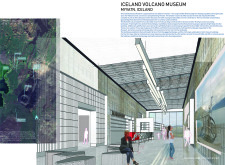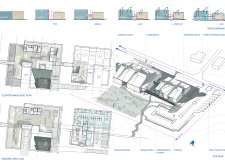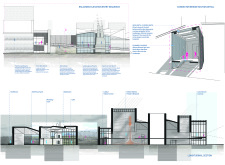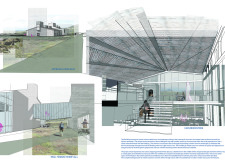5 key facts about this project
The museum performs several essential functions, including serving as a visitor center, exhibition space, and community gathering point. The visitor center accommodates amenities such as a café and bookstore, enhancing the user experience. The exhibition space is designed for flexibility, allowing for dynamic program changes and interactions that promote ongoing engagement with Iceland’s unique environmental and geological features.
Key Design Features
The Iceland Volcano Museum utilizes materials that reflect both sustainability and functionality. Flint stone and cast concrete form the primary structural components, ensuring durability while harmonizing with the local geology. Large glass panels enable natural light to enter the interior, creating a bright and inviting atmosphere that connects visitors with the outside environment.
One distinguishing feature of the design is its elevated main entry point, which offers expansive views of the Mývatn landscape. This design choice not only enhances the visitor experience upon arrival but also reinforces the museum’s narrative of relationship to its geographical context. The outdoor spaces are designed for interaction and reflection, blurring the lines between the museum and the surrounding landscape.
Innovative Integration with Natural Landscapes
An innovative aspect of the design is the incorporation of landscape as an integral component of the museum experience. The layout promotes connections between indoor exhibits and outdoor geological features, enhancing the overarching theme of geology as an interactive display. Light wells are strategically positioned to draw natural daylight into the exhibition areas, creating an engaging atmosphere while minimizing reliance on artificial lighting.
The architectural planning also considers accessibility and visitor flow, ensuring that all spaces are navigable and conducive to exploration. This thoughtful arrangement supports a holistic educational approach where visitors are encouraged to immerse themselves in the natural stories of the region.
Final Thoughts
This architectural project represents a significant example of functional design responding to environmental context. The Iceland Volcano Museum successfully combines educational objectives with thoughtful architecture, exemplifying a design that truly understands and respects its setting. Readers interested in exploring the intricacies of this project are encouraged to review architectural plans, sections, designs, and ideas for a more comprehensive understanding of the vision and execution behind this museum.


